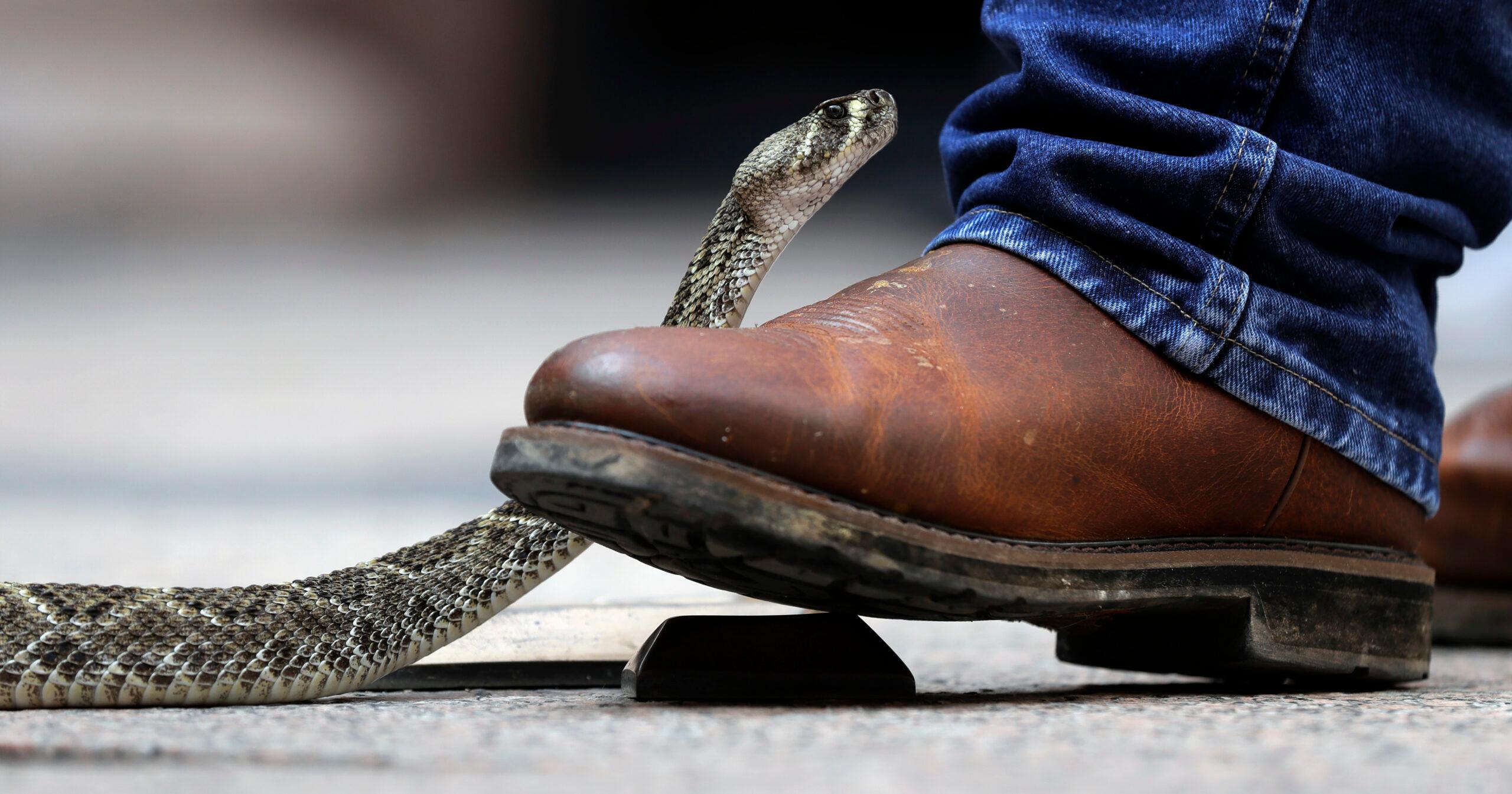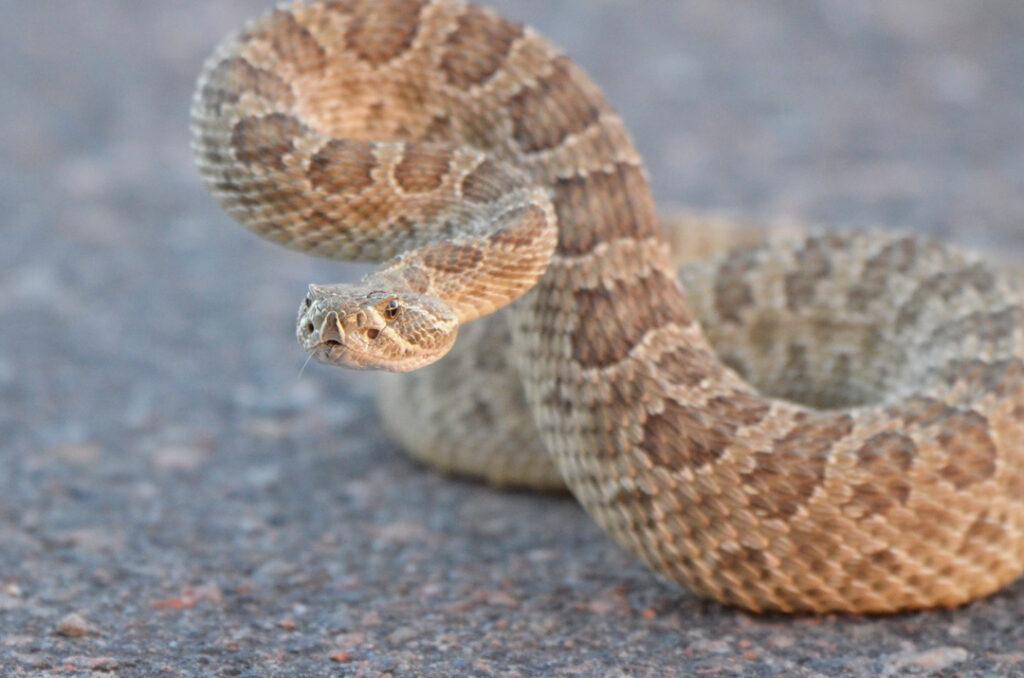
It’s summer, which means the state’s snakes are slithering out of their winter shelters to soak up some sun and find food.
Ryan Conn was hiking on a portion of the Colorado Trail in the Breckenridge area when he came across a “black mass” on a small bridge over what’s normally wet marshland.
“As you get a little closer, you see just a bunch of very small snakes, all kind of together,” Conn said. “My eyes are just like stuck on the ground. So it's going from like all these pretty yellow dandelions to just this writhing blob on the ground.”
Conn’s experience is fairly common, according to Tina Jackson, a species conservation coordinator for Colorado Parks and Wildlife. Colorado is home to 30 different snake species, and they vary from the common garter snake to the colorful ringneck snake.
The good news for hikers is that only three native species are venomous. Those are the western massasauga rattlesnake, the midget faded rattlesnake and the prairie rattlesnake.
“All three of those are very obvious in letting you know that they're venomous,” Jackson said. “So most snakes you're gonna see out there on the trail are not something you need to really worry about.”
What hikers should know about snakes on trails
Odds are, avid hikers will come across a snake at some point during their lives. Jackson said when that happens, there’s no need for alarm.
“Most of the time, what you can do is just leave them in the trail and go around, give them plenty of space,” she said. “It's one of the few times I actually recommend people go off-trail.”
Jackson said if you want to note what kind of snake it is, there are easy ways to identify whether it's venomous or not. Because all three of Colorado’s venomous snakes are rattlesnakes, they have a distinct look that’s easy to spot.
“The tip I give is look at the tail, because even a baby rattlesnake, a newborn, will have what we call a button that has a tiny little one nub rattle,” she said. “So their tails never come to a point like a pencil.”
But let’s say you want to avoid that possibility as much as possible. There’s a science to it.
Jackson said even though snakes — like all reptiles — are cold-blooded, that doesn’t mean they’re always in search of heat. Once temperatures reach the upper 90’s, snakes will often retreat into an underground shelter.
“They're actually running a fever, so they need to find a nice, cool place to go,” Jackson said.
But in the worst-case scenario where a snake bite does occur, it’s crucial that the victim stay calm and seek immediate medical attention.

Snakes can wander into backyards too, but there are ways to prevent that
Although it’s rarer than finding snakes on the trail, they can also find their way into backyards, or worse, inside homes.
Ryan Borgman, owner of Rocky Mountain Rattlesnake Service, said it’s been a slow year for his snake removal business, but he expects calls to pick up soon.
“We normally start seeing rattlesnakes around the 15th of April, when they start to leave the den and our calls start around then. But this year we didn't start getting calls until the end of May, beginning of June,” Borgman said. “I think that last snowstorm we got was kind of what spurred everything to start moving.”
Borgman said the most important preventative measure is keeping a tidy, neat yard.
“If you tend to have a lot of mice that frequent your house, those rattlesnakes are primarily rodent hunters. So that's attracting rattlesnakes to your property. The other things you can do is keep your lawn mowed short so that they don't have anywhere to hide in the grass, and [you can] trim up bushes and landscape vegetation so that you can see underneath them,” Borgman said.
Snakes are important for local ecosystems
Both Jackson and Borgman stressed that people shouldn’t kill snakes. In Colorado, it is only legal to kill a rattlesnake if they pose a threat. All other snakes are nongame wildlife and are protected by law.
Even outside of the legal ramifications, Jackson said going after a snake is a bad idea. Like all animals, snakes have their spot in the circle of life and are important to local ecosystems.
“Snakes are great at eating,” Jackson said. “Having a snake in the area is gonna help with rodent populations. It can also help with a lot of insect populations and they get eaten by a lot of things bigger than them [like] raptors, hawks, owls, and coyotes.”
More Colorado animal and wildlife stories:
- Several hundred wild horses near Meeker will be sent to Utah due to overpopulation
- What makes a prize-winning alpaca? Ask these Colorado breeders
- After a two-year pandemic hiatus, a tiny town on Colorado’s eastern plains welcomes visitors to see the ‘ghost of the prairie’
- The latest line of defense against wolves on this Colorado ranch? Guard donkeys









